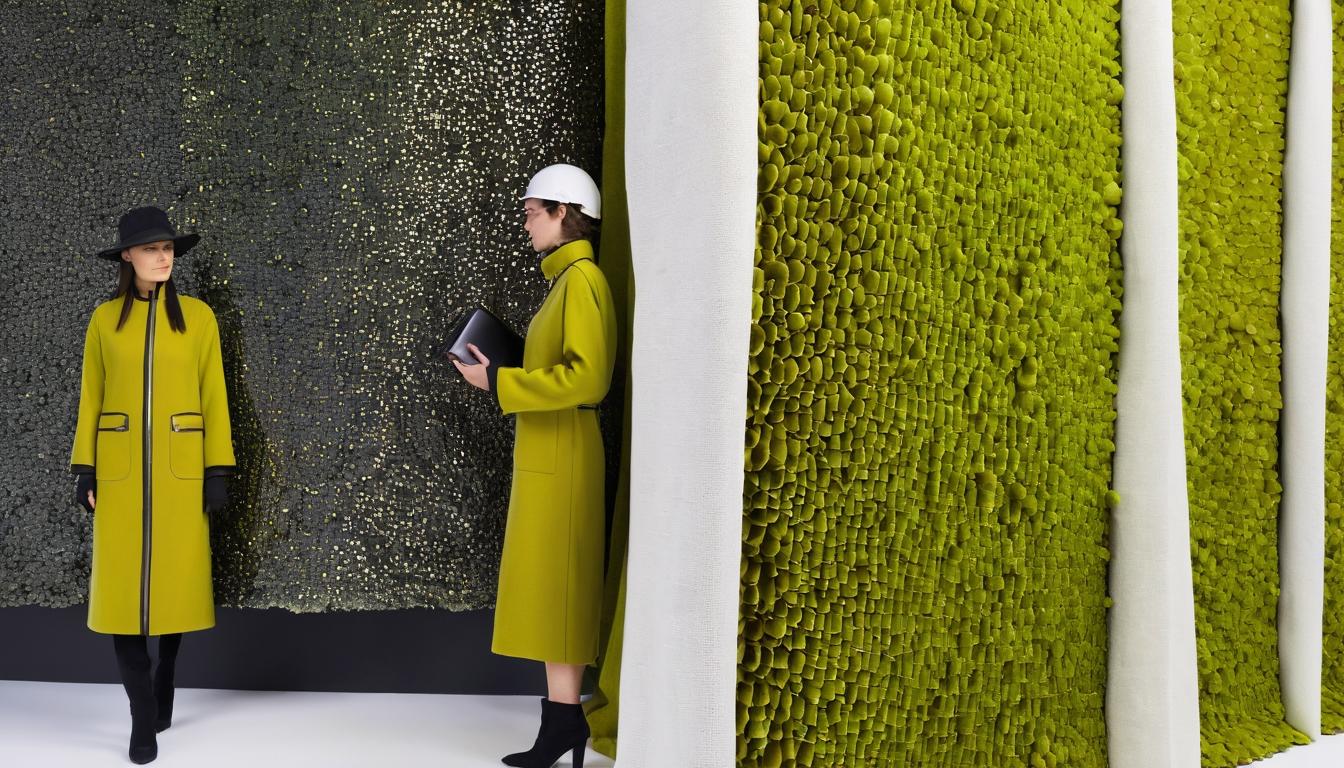There's a revolution brewing in fashion, but you won't find it on the runways of Paris or Milan. It's happening in the quiet corners of design studios, in the hushed conversations between pattern makers and fabric specialists, and in the increasingly urgent memos circulating among fashion executives. This isn't about hemlines or color palettes—it's about something far more fundamental: the very materials that clothe us.
Walk into any major fashion house today, and you'll find designers grappling with a dilemma that would have been unthinkable a decade ago. The traditional luxury materials—virgin wool, cashmere, silk, leather—are becoming increasingly problematic. Not just from an ethical standpoint, but from a practical business perspective. The supply chains are unstable, the environmental costs are mounting, and consumers are asking questions that can no longer be deflected with vague sustainability claims.
What's emerging is a fascinating tension between tradition and innovation. The old guard clings to the tactile pleasures of natural fibers, arguing that nothing can replicate the drape of silk or the warmth of cashmere. Meanwhile, a new generation of material scientists and forward-thinking designers are proving them wrong. They're developing fabrics from mushrooms, algae, citrus waste, and even captured carbon emissions that not only match but sometimes surpass their natural counterparts.
Consider mushroom leather, for instance. What started as a niche curiosity has evolved into a serious alternative to animal hides. Companies like MycoWorks and Bolt Threads have refined mycelium-based materials to the point where luxury brands are quietly incorporating them into their collections. The material breathes like leather, develops a patina over time, and can be produced with a fraction of the environmental impact. Yet most brands won't trumpet these innovations—they're testing the waters, worried about alienating traditional luxury consumers.
The resistance isn't just about aesthetics or performance. There's an entire ecosystem built around traditional materials that stands to be disrupted. Tanneries, silk farms, wool producers—these are centuries-old industries employing thousands of people across Europe and Asia. The shift to new materials threatens not just jobs but cultural heritage. In Italy's leather district, artisans who have passed down skills through generations watch these developments with a mixture of curiosity and apprehension.
Meanwhile, the science advances at a breathtaking pace. Researchers at universities and private labs are creating fabrics that would sound like science fiction to previous generations. Self-cleaning textiles embedded with photocatalytic nanoparticles. Temperature-regulating fabrics that respond to body heat. Materials that can change color or pattern on command. The challenge isn't whether these technologies work—it's whether the fashion industry is ready to embrace them.
The consumer piece of this puzzle is equally complex. While surveys consistently show that shoppers want sustainable options, their purchasing behavior often tells a different story. When faced with a choice between a familiar luxury material and an innovative alternative, many still choose tradition. The exceptions tend to be younger consumers who lack the emotional attachment to materials like leather and silk that their parents might have had.
This generational divide is creating a fascinating split in marketing strategies. Some brands are creating entirely new sub-labels for their innovative materials, effectively creating a parallel universe where they can experiment without risking their core identity. Others are taking the opposite approach—slowly introducing new materials into their main collections, hoping customers won't notice the difference until they've already fallen in love with the product.
The regulatory environment adds another layer of complexity. As governments worldwide implement stricter environmental regulations and labeling requirements, fashion companies find themselves navigating a patchwork of standards that vary by country. The lack of universal definitions for terms like 'sustainable' or 'eco-friendly' creates both challenges and opportunities for brands willing to be transparent about their material choices.
What's clear is that we're witnessing the early stages of a transformation that will reshape fashion at its most fundamental level. The materials that define luxury, comfort, and style are being reimagined in laboratories and design studios around the world. The question isn't whether this change will happen, but how quickly the industry will adapt—and whether it will lead the charge or be dragged along by consumer demand and environmental necessity.
The most forward-thinking brands understand that this isn't just about finding replacements for problematic materials. It's about rethinking the entire lifecycle of clothing—from how it's made to how it's cared for to what happens when we're done with it. The materials revolution is ultimately about creating a fashion system that can endure, not just for seasons, but for generations.
The quiet rebellion happening in fashion's back rooms

